Premium Only Content

Bathing a baby baboon is not the easiest thing in the world
This baby Chacma Baboon is an orphan, having to be rescued and hand-reared at a wildlife sanctuary. If it can be hard to give baths to pets, you can't expect it to be easy in wild animals! Thankfully, the baby baboons don't get bathed regularly; only when they get lice or other ectoparasites, in which case they need to get bathed with a special shampoo. The bath itself doesn't bother them; what makes them scream is not being attached to their carer's body.
The Chacma Baboon (Papio ursinus), is one of the five species of baboons, along with the Yellow baboon (Papio cynocephalus), the Olive baboon (Papio anubis), the Guinea baboon (Papio papio), and the Hamadryas baboon (Papio hamadryas). With the exception of the Hamadryas Baboon, which also occurs in the southwestern tip of the Arabian Peninsula, they are all native to the African continent. The Chacma Baboon occurs all over southern Africa, up to the Zambezi valley, Caprivi, and southern Angola.
Two subspecies of Chacma Baboon are recognized: Papio ursinus griseipes, occuring in south-west Zambia, Botswana, Zimbabwe, and Mozambique; and Papio ursinus ursinus, occuring in all provinces of South Africa and throughout Namibia.
They have the need to drink water daily, making water a limiting factor for their range, but they occupy subdesert and steppes, savanna, all types of woodland, montane regions, Cape Fynbos and Succulent Karoo.
Chacma Baboons live in troops of usually 20 to 50 members, but up to 130 individuals have been recorded together. The troops contain adult males, females and the babies, and it has a complex social structure, and are ranked by dominance.
Baboons are omnivorous and opportunistic, which means that they eat a little bit of everything, and will take whatever they can get their hands on, even though they might show a preference for bulbs, shoots, roots, seeds, and fruits. They can also eat fungi, lichen, invertebrates, small vertebrates and, occasionally, even small antelopes, or lambs and small stock, in some ranching areas.
They are usually considered pests, for raiding crops and livestock, which makes people shoot and poison them. They are also hunted for bushmeat, captured for the pet trade and can be used for medical research, but victims of urbanization as well, getting hit by cars or electrocuted.
-
 0:43
0:43
NataliaCara
2 years agoIt's dinner time for this rescued immature Southern Elephant Seal
4241 -
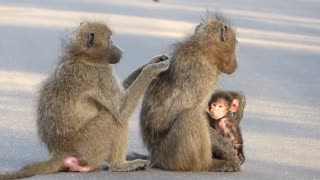 2:13
2:13
roaneric
5 years agoWobbly baby baboon
40.8K -
 4:35
4:35
KTNV
5 years agoScariests Thing In the World
18 -
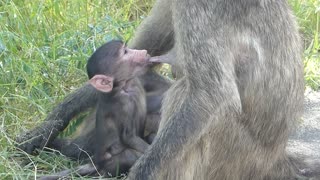 0:34
0:34
roaneric
5 years agoCuteness overload. Baby baboon suckling
51.6K -
 4:20
4:20
ElenaBesedina
6 years agobaby first time bathing
59 -
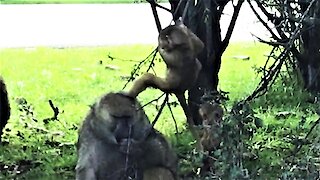 1:04
1:04
WildCreatures
5 years ago $31.09 earnedOlder baboon patiently tolerates playful baby baboons
12.4K4 -
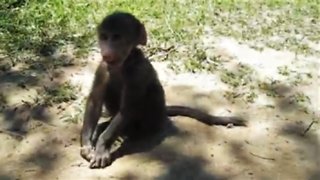 0:36
0:36
NataliaCara
5 years agoRescued baby baboon is too adorable
3314 -
 3:47
3:47
Cracked
6 years agoThe Existential Terror of the Easiest Job in the World
21 -
 1:28
1:28
ViralHog
6 years ago $0.01 earnedBaby Turtle Enters the World
185 -
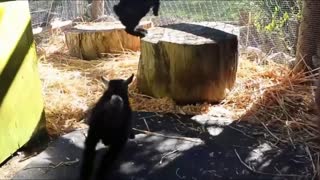 3:19
3:19
ZooAnimals
5 years agoCuttest Baby Goats Around The World
31